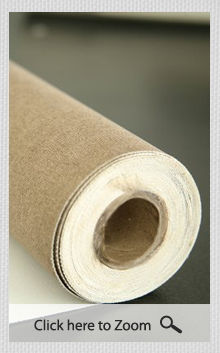

The following illustrations provide the commonly used cabinetmaking terminology, as well as alternate terminology when applicable, in addition to the terminology offered by Buck that is now so commonly used by painting conservators. Podmaniczky, during his tenure as Senior Furniture Conservator at Winterthur Museum, was also consulted on the terminology for stretcher joints. In order to standardize the nomenclature for the various types of stretcher joinery, several books on furniture construction were consulted. Buck's handout was made, that some of the terms used to describe stretcher joints are at variance with the terms used by furniture conservators and decorative arts scholars for similar joints used in cabinetmaking. It has been noted over the years since Mr.

In 1992, Alexander Katlan reprinted an edited version of Buck's paper, thereby allowing it to be read and used by a wider audience. Hundreds of photocopies later, Buck's paper now often includes the photocopied notes of our teachers and mentoring conservators from whom the paper was borrowed and copied. With this hand-written note on the front of his unpublished typescript, Richard Buck presented his seminal survey of stretcher designs categorized by joint types to a group of conservators at the 1972 International Council of Museums (ICOM) meeting in Madrid. “Note: An unsolved problem-to find simple appropriate names for each type of stretcher. Illustrated Historical Review of Stretchers and Strainers Historical and Original Stretchers and Strainers 3.6.5 Tips for Making and Handling Temporary Stretchers and Strainers.3.6.4.1 Types of Custom-Made Stretchers.3.6.3.5 Factors to Consider when Using a Temporary Stretcher.3.6.3.4 Use of Temporary Stretchers and Strainers for Lining.3.6.3.1 Working on the Front and Back of the Painting at the Same Time.3.6.3 Reasons for Using Temporary Stretchers.3.6.2 Methods of Tensioning the Original Canvas.3.6.1 Historical Review and Introduction.3.5.3 Stretcher Lining (crossbar or cami-linings).3.5 Backing Inserts and Stretcher Linings.3.2.5.3 Conservation Use: Advantages and Disadvantages.3.2 Stretchers for Double-Sided Paintings.3.1.3 Conservation Use: Advantages and Disadvantages.2.4.2.2.3 Conservation Use: Advantages and Disadvantages.2.4.2.2 Individual Bar Control Stretchers.2.4.2.1.3 Conservation Use: Advantages and Disadvantages.2.4.2.1 Self-Adjusting Continuous Tension Stretcher.2.4.2 Overall Bar Adjustment Stretcher Designs.2.4.1.3 Conservation Use: Advantages and Disadvantages.2.3.5 Special Considerations: Application and Adjustment.2.3.3 Conservation Use: Advantages and Disadvantages.2.2.5 Assembling an Expansion Bolt Stretcher.2.1.3.3 Advantages and Disadvantages of Keyed Stretcher Designs.2.1.3.2 Mechanics of the Keyed Stretcher Design.2.1.3.1 Preservation of the Keyed Stretcher Design.2.1.3 Conservation Use: Advantages and Disadvantages.2 Conservation and Contemporary Stretchers.1.5 Historical Review of South American and Spanish Colonial Stretchers.1.4 Historical Review of Nails and Tacks.1.2 Historical Review of Joint-Adjusting Mechanisms.1.1 Illustrated Historical Review of Stretchers and Strainers.1 Historical and Original Stretchers and Strainers.


 0 kommentar(er)
0 kommentar(er)
